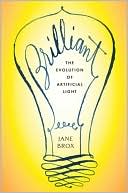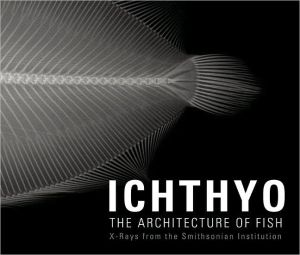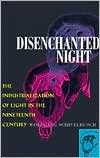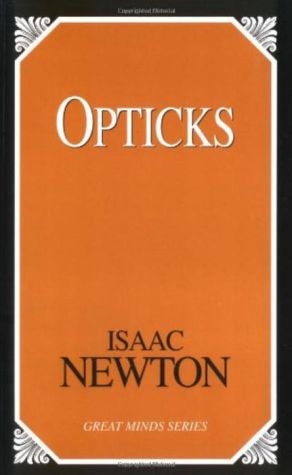Catching the Light: The Entwined History of Light and Mind
In 1910, the surgeons Moreau and LePrince wrote about their successful operation on an eight-year-old boy who had been blind since birth because of cataracts. When the boy's eyes were healed they removed the bandages and, waving a hand in front of the child's physically perfect eyes, asked him what he saw. "I don't know," was his only reply. What he saw was only a varying brightness in front of him. However, when allowed to touch the hand as it began to move, he cried out in a voice of...
Search in google:
In 1910, the surgeons Moreau and LePrince wrote about their successful operation on an eight-year-old boy who had been blind since birth because of cataracts. When the boy's eyes were healed they removed the bandages and, waving a hand in front of the child's physically perfect eyes, asked him what he saw. "I don't know," was his only reply. What he saw was only a varying brightness in front of him. However, when allowed to touch the hand as it began to move, he cried out in a voice of triumph, "It's moving!" He could feel it move, but he still needed laboriously to learn to see it move. Light and eyes were not enough to grant him sight. How, then, do we see? What's the difference between seeing and perception? What is light? From ancient times to the present, from philosophers to quantum physicists, nothing has so perplexed, so fascinated, so captivated the mind as the elusive definition of light. In Catching the Light, Arthur Zajonc takes us on an epic journey into history, tracing how humans have endeavored to understand the phenomenon of light. Blending mythology, religion, science, literature, and painting, Zajonc reveals in poetic detail the human struggle to identify the vital connection between the outer light of nature and the inner light of the human spirit. He explains the curiousness of the Greeks' blue and green "color blindness": Odysseus gazing longingly at the "wine-dark sea"; the use of chloros (green) as the color of honey in Homer's Odessey; and Euripides' use of the color green to describe the hue of tears and blood. He demonstrates the complexity of perception through the work of Paul Cézanne—the artist standing on the bank of a river, painting the same scene over and over again, the motifs multiplying before his eyes. And Zajonc goes on to show how our quest for an understanding of light, as well as the conclusions we draw, reveals as much about the nature of our own psyche as it does about the nature of light itself. For the ancient Egyptians the nature of light was clear—it simply was the gaze of God. In the hands of the ancient Greeks, light had become the luminous inner fire whose ethereal effluence brought sight. In our contemporary world of modern quantum physics, science plays the greatest part in our theories of light's origin—from scientific perspectives such as Sir Isaac Newton's "corpuscular theory of light" and Michael Faraday's "lines of force" to such revolutionary ideas as Max Planck's "discrete motion of a pendulum" (the basis of quantum mechanics), Albert Einstein's "particles of light" and "theory of relativity," and Niels Bohr's "quantum jumps." Yet the metaphysical aspects of the scientific search, Zajonc shows, still loom large. For the physicist Richard Feynman, a quantum particle travels all paths, eventually distilling to one path whose action is least—the most beautiful path of all. Whatever light is, here is where we will find it. With rare clarity and unmatched lyricism, Zajonc illuminates the profound implications of the relationships between the multifaceted strands of human experience and scientific endeavor. A fascinating search into our deepest scientific mystery, Catching the Light is a brilliant synthesis that will both entertain and inform. Publishers Weekly To the ancient Egyptians, light was ``the sight of God.'' To quantum physicist Max Planck, light consisted of discrete particles or photons. How humanity has conceived of and responded to light is the subject of an intriguing investigation by Amherst physics professor Zajonc. In lyrical, precise prose, he argues that while Plato viewed the ``mind's eye'' as a form of cognition uniting inner and outer light, Newton and Faraday signaled a transition to a mechanistic conception of seeing and of light. Goethe's theory of color and light, rooted in the imagination, and Rudolf Steiner's metaphysics of light as angelic emanations brought ``a renaissance of the mythic,'' which Zajonc welcomes as he seeks to restore a spiritual dimension to our perception of light and of the world. Along the way he considers Kandinsky, linear perspective, a cultural history of rainbows, Zoroastrianism, Keats and Einstein. (Feb.)
Ch. 1Entwined Lights: The Lights of Nature and of Mind1Ch. 2The Gift of Light10Ch. 3Light Divided: Divine Light and Optical Science38Ch. 4The Anatomy of Light58Ch. 5The Singing Flame: Light as Ethereal Wave97Ch. 6Radiant Fields: Seeing by the Light of Electricity124Ch. 7Door of the Rainbow161Ch. 8Seeing Light - Ensouling Science: Goethe and Steiner188Ch. 9Quantum Theory by Candlelight225Ch. 10Of Relativity and the Beautiful253Ch. 11Least Light: A Contemporary View292Ch. 12Seeing Light330Notes345Acknowledgments371Index373
\ From the Publisher"A small gem of a book, poetic in its style and in its determined conjoining of distant ideas....As crammed with culture as an overcrowded museum storeroom."--James Gleick, The Washington Post\ "Brilliant....A beautifully composed meditation."--Kirkus Reviews\ "An amazing synthesis and a joy to read--I have not enjoyed a book so much for a long time....An extraordinary work."--Oliver Sacks, M.D., author of The Man Who Mistook His Wife for a Hat a subject surprisingly clear.\ "Catching the Light is nothing short of a masterpiece. It is at once a riveting story, literate and beautifully precise. What more could one ask for in a marriage between science and art?"--Richard Selzer, author of Down from Troy\ \ \ \ \ \ Publishers Weekly\ - Publisher's Weekly\ To the ancient Egyptians, light was ``the sight of God.'' To quantum physicist Max Planck, light consisted of discrete particles or photons. How humanity has conceived of and responded to light is the subject of an intriguing investigation by Amherst physics professor Zajonc. In lyrical, precise prose, he argues that while Plato viewed the ``mind's eye'' as a form of cognition uniting inner and outer light, Newton and Faraday signaled a transition to a mechanistic conception of seeing and of light. Goethe's theory of color and light, rooted in the imagination, and Rudolf Steiner's metaphysics of light as angelic emanations brought ``a renaissance of the mythic,'' which Zajonc welcomes as he seeks to restore a spiritual dimension to our perception of light and of the world. Along the way he considers Kandinsky, linear perspective, a cultural history of rainbows, Zoroastrianism, Keats and Einstein. (Feb.)\ \ \ Library JournalZajonc is an academic physicist who specializes in quantum physics, but his approach to the subject of light is somewhat unconventional from the perspective of many of his colleagues. He provides a capsule history of humans' changing understanding of the nature of light; scientific developments are interspersed with the comments of numerous philosophers, literary figures, and miscellaneous other non-scientists. In summary, he appears to argue that modern science has failed to supply us with a complete understanding of light and that we would be better off with an amalgam that incorporates spiritual and philosophical aspects as well as scientific models. His views are in part unorthodox but deserve a hearing. Recommended chiefly for academic libraries.-- Jack W. Weigel, Univ. of Michigan Lib., Ann Arbor\ \ \ \ \ Kirkus ReviewsBrilliant study of the relationship between two fields usually kept miles apart: the physics of light and the metaphysics of the mind. Zajonc (Physics/Amherst College) begins with the curious problem of why blind people usually see only a blur when they first recover their sight. The solution is that "without an inner light, without a formative visual imagination, we are blind." Seeing requires light and understanding. This axiom has revolutionary consequences, for it suggests that our very perception of the world is malleable: If we could see with greater consciousness, we would see—and thus inhabit—a richer cosmos. Zajonc traces this concept as it appears in mythology, science, literature, painting, and the history of ideas from Plato to Einstein. The ancient Greeks, he argues convincingly, did not perceive colors as we do; green was seen as "moist freshness" (e.g., blood was "green"), while blue was seen as "darkness." Why? Because the "antique imagination" differed from ours; perception has evolved through history—and so, too, has our comprehension of light. Euclid saw light geometrically; Robert Grosseteste imagined all matter as condensed light; Newton established optics as a mechanical science; in Planck's quantum mechanics, light maintains its mystery as "a single thing with the universe inside." Zajonc seems equally at ease discoursing on atoms or angels, Zoroaster or relativity. He does so without fudging the science or fuzzing the spirituality, by seeing religion and science as essentially one enterprise, that of "seeing the invisible in the visible." His two masters seem to be Goethe and Rudolf Steiner, both of whom held that, as Zajonc puts it, "itis ourself whom we study in studying light." As our consciousness evolves, new perceptions beckon; in time, we may see that "the natural world around us grows out of the moral world within us." A beautifully composed meditation that sheds new light on the nature of nature itself.\ \







